
The Prolific Succulent World: A Guide to its 'Mother of Many' Species

Succulents are a diverse group of plants known for their ability to store water in their leaves, stems, and roots. With their unique shapes, vibrant colors, and low maintenance requirements, succulents have become increasingly popular among plant enthusiasts and collectors. One particularly fascinating aspect of the succulent world is the 'Mother of Many' species, which are known for their prolific ability to produce new plantlets.
We will explore the world of 'Mother of Many' succulents and delve into some of the most well-known and beloved species. We will discuss their characteristics, propagation methods, and care tips to help you successfully grow and enjoy these remarkable plants. Whether you are a seasoned succulent enthusiast or just starting your collection, this guide will provide valuable insights and inspiration for incorporating 'Mother of Many' succulents into your indoor or outdoor garden.
- There are many different species of succulents that are considered "Mother of Many."
- These succulents are known for their ability to produce numerous offshoots or "babies."
- One way to propagate these succulents is by separating the offshoots and planting them individually
- Another method is to take stem or leaf cuttings and root them to create new plants
- Succulent enthusiasts often enjoy collecting and growing these "Mother of Many" species
- These succulents are great for beginners as they are easy to care for and propagate
- They come in a variety of shapes, sizes, and colors, offering a wide range of options for plant lovers
- The "Mother of Many" succulents can be used for various purposes, such as indoor decoration or outdoor landscaping
- With proper care and attention, these succulents can thrive and become a beautiful addition to any collection or garden
- Exploring the world of "Mother of Many" succulents is a fascinating journey that offers endless possibilities for plant enthusiasts
- Frequently Asked Questions
There are many different species of succulents that are considered "Mother of Many."
The "Mother of Many" is a term used to describe certain species of succulents that have a unique ability to reproduce quickly and easily. These succulents are known for producing numerous offshoots or baby plants, hence the name "Mother of Many."
One of the most popular species of succulents in this category is the Kalanchoe daigremontiana, also known as the "Mother of Thousands." This succulent has long, paddle-shaped leaves that grow in a rosette formation. Along the edges of these leaves, tiny plantlets or baby plants appear, which can easily be detached and planted to grow into new mature plants. It's truly a fascinating sight to see a single "Mother of Thousands" succulent producing a multitude of offspring.
Another noteworthy species is the Bryophyllum delagoense, commonly called the "Chandelier Plant" or "Mother of Millions." This succulent has thick, fleshy leaves that are green with red or purple spots. Similar to the Kalanchoe daigremontiana, the edges of the leaves produce small plantlets that drop off and root themselves in the soil, resulting in a rapid expansion of the plant population.
The Sempervivum tectorum, or "Hen and Chicks," is another succulent that falls into the "Mother of Many" category. This plant forms a tight rosette of leaves, with the central "hen" plant surrounded by smaller "chicks." Over time, the "chicks" will grow and spread, forming a cluster of plants. Each "chick" can easily be separated and replanted, making it an excellent choice for propagation.
It's important to note that while these succulents may be prolific in their reproduction, they still require proper care and attention. Make sure to provide them with well-draining soil, adequate sunlight, and occasional watering. Overwatering can lead to root rot, so it's crucial to allow the soil to dry out between waterings. Additionally, these succulents can be propagated by leaf or stem cuttings if desired.
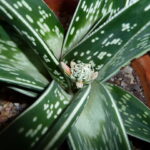 Guide to Aloe Family Diversity: Types of Succulents
Guide to Aloe Family Diversity: Types of SucculentsIf you're looking to add some unique and fascinating succulents to your collection, consider exploring the world of "Mother of Many" species. Their ability to produce countless offspring is truly a wonder of nature, and they can bring a touch of charm and abundance to any succulent garden.
These succulents are known for their ability to produce numerous offshoots or "babies."
When it comes to succulents, there is one group of plants that stands out for its incredible ability to reproduce - the "Mother of Many" species. These succulents, also known as "prolific succulents," are renowned for their knack of producing a multitude of offshoots or "babies."
What sets the "Mother of Many" succulents apart is their unique growth habit. Instead of growing a single stem or rosette like other succulents, these plants send out multiple stems or clusters, each with its own set of leaves. Over time, these stems develop into individual plants, creating a visually stunning, dense cluster of succulents.
Why are they called "Mother of Many" succulents?
The name "Mother of Many" perfectly captures the essence of these succulents. As the parent plant produces new stems and clusters, it becomes a "mother" to an ever-increasing number of offspring. It is not uncommon to see a single "Mother of Many" succulent with dozens or even hundreds of babies surrounding it, hence earning their delightful moniker.
The ability of these succulents to propagate so easily is a testament to their adaptability and resilience. They have evolved this fascinating survival strategy to ensure their species' continuity in harsh and unpredictable environments.
Popular species of "Mother of Many" succulents
There are several species of "Mother of Many" succulents, each with its own unique characteristics and charm. Here are a few popular ones:
- Senecio rowleyanus: Commonly known as "String of Pearls," this succulent features long trailing stems adorned with small bead-like leaves, resembling a string of pearls.
- Kalanchoe daigremontiana: Also known as the "Mother of Thousands," this succulent produces tiny plantlets along the edges of its leaves, which eventually drop and grow into new plants.
- Bryophyllum delagoense: Often referred to as the "Chandelier Plant," this succulent has unique pendant-like clusters of plantlets that hang from the edges of its leaves.
These are just a few examples of the diverse "Mother of Many" succulents that exist in the plant kingdom. Each species offers a captivating display of their reproductive prowess, making them a favorite among succulent enthusiasts.
 Discover Vibrant Ruby Red Succulents: Your Perfect Find
Discover Vibrant Ruby Red Succulents: Your Perfect FindCaring for "Mother of Many" succulents
While these succulents may seem prolific in their propagation, they still require proper care to thrive. Here are some essential tips for caring for your "Mother of Many" succulents:
- Light: Place your succulents in a location that receives bright, indirect sunlight. Avoid exposing them to prolonged periods of intense sunlight, as it can scorch their leaves.
- Watering: "Mother of Many" succulents prefer well-draining soil. Water them thoroughly but allow the soil to dry out between watering sessions to prevent root rot.
- Propagation: Take advantage of their natural ability to propagate by gently removing the offshoots or plantlets and planting them in a suitable growing medium.
- Temperature: These succulents thrive in moderate temperatures, ideally between 60-80°F (15-27°C). Protect them from extreme cold or heat.
- Fertilization: Use a balanced succulent fertilizer sparingly during the growing season to provide essential nutrients.
By following these care guidelines, you can ensure that your "Mother of Many" succulents continue to flourish and delight you with their ever-growing brood of babies.
The "Mother of Many" succulents are a true wonder of the plant world. Their ability to produce numerous offshoots showcases nature's remarkable adaptability and resilience. Whether you're a seasoned succulent enthusiast or a beginner, adding these captivating succulents to your collection will undoubtedly bring joy and fascination to your gardening journey.
One way to propagate these succulents is by separating the offshoots and planting them individually
To propagate succulents, one efficient method is by separating the offshoots and planting them individually. This technique is commonly used for succulent species that produce 'mother of many' plants.
'Mother of many' succulents, also known as prolific succulents, are characterized by their ability to produce numerous offshoots or baby plants. These offshoots grow from the base of the mother plant and can eventually develop their own roots and become independent plants.
To separate the offshoots, follow these simple steps:
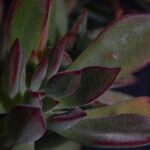 Explore Luxurious Velvet-Leaf Succulents for Your Garden
Explore Luxurious Velvet-Leaf Succulents for Your GardenStep 1: Identify the offshoots
Inspect the base of the mother plant carefully and identify the offshoots that have developed roots or are showing signs of growth. These offshoots are typically smaller in size and have their own set of leaves.
Step 2: Prepare the offshoots
Gently loosen the soil around the base of the mother plant to expose the offshoots' roots. Be cautious not to damage the roots or the mother plant during this process.
Step 3: Separate the offshoots
Using your hands or a clean gardening tool, carefully detach the offshoots from the mother plant. Ensure that each offshoot has a sufficient amount of roots attached to it.
Step 4: Plant the offshoots
Prepare a well-draining potting mix suitable for succulents. Make small holes in the soil and gently place the offshoots, ensuring that the roots are covered with soil. Press the soil lightly around the base of each offshoot to secure it in place.
Step 5: Water and care for the new plants
After planting the offshoots, water them lightly to settle the soil. Avoid overwatering, as succulents are prone to root rot. Place the newly planted offshoots in a bright location with indirect sunlight. Allow the soil to dry out between watering sessions, as succulents prefer a drier environment.
With proper care, the separated offshoots will continue to grow and develop into independent succulent plants. As they mature, they may also produce their own offshoots, continuing the cycle of the 'mother of many' succulent species.
By propagating succulents through separating offshoots, you can expand your succulent collection and enjoy the beauty of these unique plants.
 Unveiling the World of Succulent Plants and Their Unique Traits
Unveiling the World of Succulent Plants and Their Unique TraitsAnother method is to take stem or leaf cuttings and root them to create new plants
One of the most fascinating aspects of succulents is their ability to propagate effortlessly. Another method of expanding your succulent collection is by taking stem or leaf cuttings and rooting them to create new plants.
Stem Cuttings
To propagate succulents through stem cuttings, follow these simple steps:
- Select a healthy stem: Choose a stem that is plump and not too woody. Avoid stems that are too young or too old.
- Prepare the cutting: Using a clean, sharp knife or shears, make a clean cut just below a leaf node. Ensure that the cutting is at least 3-4 inches long.
- Let the cutting dry: Place the cutting in a warm, dry location out of direct sunlight. Allow it to dry for a few days until the cut end callouses over.
- Root the cutting: Once the cutting has calloused, plant it in well-draining soil or a suitable succulent propagation mix. Water sparingly, allowing the soil to dry out between waterings.
- Provide the right conditions: Place the cutting in a bright location with indirect sunlight. Avoid exposing it to harsh sunlight as this can damage the tender new growth.
- Wait patiently: Over time, the cutting will develop roots and start growing into a new plant. Be patient and provide the necessary care for its growth.
Leaf Cuttings
Leaf cuttings are another popular method to propagate succulents. Here's how you can do it:
- Select a healthy leaf: Choose a plump, healthy leaf from the succulent. Gently twist the leaf off the stem, ensuring that you remove it cleanly without damaging the base.
- Prepare the leaf: Lay the leaf on a dry surface and let it dry for a few days until a callus forms over the cut end. This callus will help prevent rotting during propagation.
- Plant the leaf: Once the callus has formed, place the leaf on top of well-draining soil or succulent propagation mix. It's important to ensure that only the cut end touches the soil while the rest of the leaf remains exposed.
- Water sparingly: Mist the soil lightly or water from the bottom to avoid overwatering. Succulents are prone to rot if they are kept too wet during the propagation process.
- Provide indirect sunlight: Place the leaf cutting in a bright location with indirect sunlight. Avoid direct sunlight as it can scorch the delicate leaf.
- Be patient: In a few weeks to months, tiny roots will start developing from the base of the leaf, eventually leading to the growth of a new succulent plant.
By using stem or leaf cuttings, you can multiply your succulent collection and share the joy of these beautiful plants with friends and family. Remember to always provide the right conditions and care to ensure successful propagation.
Succulent enthusiasts often enjoy collecting and growing these "Mother of Many" species
Succulents have gained immense popularity among plant lovers due to their unique and captivating characteristics. Among the vast variety of succulents, there is a group known as the "Mother of Many" species that has captured the attention of many enthusiasts.
 Non-Cactus Succulents: A Guide to Other Succulent Varieties
Non-Cactus Succulents: A Guide to Other Succulent VarietiesThe name "Mother of Many" is derived from the plant's remarkable ability to propagate itself by producing numerous offshoots or babies. These offshoots, also referred to as "pups" or "chicks," grow from the base of the main plant and eventually develop into independent plants.
One of the fascinating aspects of these succulents is their ability to create a visually striking display with their cluster of offspring. As the name suggests, a single "Mother of Many" plant can give rise to an abundant number of new plants, creating a lush and thriving succulent arrangement.
These species are not only aesthetically pleasing but also offer a rewarding experience for succulent enthusiasts. Watching the growth and development of the pups can be a source of joy and satisfaction, as it showcases the resilience and vitality of these remarkable plants.
Popular "Mother of Many" Species
There are several popular species within the "Mother of Many" category that are favored by collectors and enthusiasts alike. Some of the most sought-after varieties include:
- Kalanchoe daigremontiana: Also known as the "Mother of Thousands," this succulent produces an astonishing number of plantlets along the edges of its leaves. Each leaflet has the potential to grow into a new plant, resulting in an impressive display.
- Echeveria nodulosa: This species, commonly referred to as the "Painted Echeveria," features rosettes of vibrant green leaves adorned with red spots. It produces numerous offsets that can be propagated to create a visually stunning arrangement.
- Sempervivum tectorum: Known as the "Hens and Chicks," this succulent forms tight rosettes and produces numerous offsets that resemble tiny chicks. With its ability to thrive in various conditions, it is a popular choice for beginner succulent growers.
These are just a few examples of the diverse array of "Mother of Many" species available. Each species offers its own unique beauty and propagation characteristics, adding to the allure of collecting and growing these succulents.
Whether you are a seasoned succulent collector or a beginner looking to embark on a new plant journey, the "Mother of Many" species are undoubtedly a captivating addition to any succulent collection. Their ability to propagate and create a lush display of offspring makes them a truly remarkable group within the succulent world.
These succulents are great for beginners as they are easy to care for and propagate
Succulents, also known as water-storing plants, have gained immense popularity in recent years due to their low maintenance and unique beauty. Among the vast variety of succulents, there is a particular group that stands out for its ability to reproduce effortlessly – the 'Mother of Many' species. These succulents are perfect for beginners looking to embark on their plant parenthood journey as they are incredibly easy to care for and propagate.
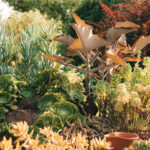 Discover the Enchanting Beauty of Ruffled Succulent Leaves
Discover the Enchanting Beauty of Ruffled Succulent LeavesWhat makes the 'Mother of Many' succulents special?
The 'Mother of Many' succulents, scientifically known as Kalanchoe daigremontiana, are aptly named due to their remarkable ability to produce numerous baby plants along the edges of their leaves. This unique characteristic sets them apart from other succulents and makes them a captivating addition to any plant collection.
One of the main reasons why these succulents are loved by beginners is their resilience and adaptability. They can thrive in a wide range of environments, including both indoor and outdoor settings. Whether you have a sunny windowsill or a shady corner, the 'Mother of Many' succulents can adapt to varying light conditions, making them an ideal choice for any household.
How to care for 'Mother of Many' succulents?
Caring for 'Mother of Many' succulents is a breeze, even for those without a green thumb. Here are some essential tips to ensure the well-being of your succulent babies:
- Light: These succulents thrive in bright, indirect sunlight. Place them near a window where they can receive adequate sunlight without being directly exposed to harsh rays.
- Watering: Like most succulents, 'Mother of Many' plants prefer well-draining soil. Allow the soil to dry out completely between waterings, as overwatering can lead to root rot. Water sparingly, especially during the dormant winter months.
- Propagation: One of the most exciting aspects of 'Mother of Many' succulents is their ability to propagate effortlessly. Simply remove the baby plants, known as plantlets, from the edges of the leaves and place them in a well-draining soil mix. With time and proper care, these plantlets will grow into mature, independent succulents.
- Fertilization: 'Mother of Many' succulents generally do not require frequent fertilization. However, you can apply a balanced succulent fertilizer diluted to half strength during their active growing season (spring and summer) to promote healthy growth.
The beauty of 'Mother of Many' succulents in your space
The 'Mother of Many' succulents not only make a stunning addition to any indoor or outdoor space but also bring a sense of tranquility and natural beauty. Their fleshy, green leaves and unique propagation method make them an intriguing conversation starter and a perfect gift for plant enthusiasts of all levels.
If you are a beginner looking to venture into the world of succulents, the 'Mother of Many' species should be at the top of your list. With their easy care requirements and prolific propagation abilities, these succulents are sure to bring joy and a touch of nature to your living space.
They come in a variety of shapes, sizes, and colors, offering a wide range of options for plant lovers
If you're a plant enthusiast, succulents are sure to catch your attention. With their unique and fascinating characteristics, succulents have become increasingly popular among gardeners and collectors alike. One particular group of succulents that stands out is the 'Mother of Many' species.
 Fast-Growing Succulents: Seed-Grown Varieties Revealed
Fast-Growing Succulents: Seed-Grown Varieties RevealedWhat are 'Mother of Many' succulents?
The 'Mother of Many' succulents, scientifically known as Kalanchoe daigremontiana, are a group of plants that reproduce through a fascinating method called vivipary. Unlike most plants that rely on seeds for reproduction, these succulents produce tiny plantlets along the edges of their leaves.
Shapes, sizes, and colors
One of the most captivating aspects of 'Mother of Many' succulents is the wide variety of shapes, sizes, and colors they come in. From long and slender leaves to compact rosettes, these succulents offer an array of options for plant lovers to choose from. The leaves can range from vibrant greens to shades of red, orange, and even purple, adding a splash of color to any garden or indoor space.
Easy to care for
One of the reasons why 'Mother of Many' succulents are sought after is because they are relatively easy to care for. These hardy plants are adapted to survive in arid conditions, making them drought-tolerant and low-maintenance. They thrive in well-draining soil and require infrequent watering, making them an ideal choice for busy plant enthusiasts or those new to gardening.
Propagation and expansion
 Exploring the Fascinating World of Tree-Like Succulent Plants
Exploring the Fascinating World of Tree-Like Succulent PlantsThe unique reproductive method of 'Mother of Many' succulents makes them excellent candidates for propagation. The plantlets that grow on the leaves can be easily detached and replanted to create new plants. This characteristic adds to their appeal, as it allows enthusiasts to expand their collection and share these fascinating plants with others.
Conclusion
The 'Mother of Many' succulents are undoubtedly a captivating group of plants. With their diverse shapes, sizes, and colors, they offer a plethora of options for plant lovers to explore. Their easy care requirements and ability to propagate effortlessly make them a must-have for any succulent enthusiast. So, why not add a 'Mother of Many' succulent to your collection and experience the wonders of this prolific succulent world?
The "Mother of Many" succulents can be used for various purposes, such as indoor decoration or outdoor landscaping
The "Mother of Many" succulents, also known as Kalanchoe daigremontiana, are a fascinating species of succulents that are renowned for their unique reproductive abilities. These succulents have the extraordinary ability to produce plantlets, or "babies," along the edges of their leaves. This characteristic has earned them the nickname "Mother of Many."
One of the reasons why the "Mother of Many" succulents are so popular is their versatility. They can be used for various purposes, making them a favorite among both indoor plant enthusiasts and outdoor landscapers.
Indoor Decoration
The "Mother of Many" succulents are fantastic additions to any indoor space. Their striking appearance and ability to reproduce easily make them a popular choice for indoor decoration. These succulents can be potted in small containers or hanging baskets, allowing you to create stunning displays on windowsills, shelves, or even as hanging decor.
With their unique leaf structure and vibrant green color, "Mother of Many" succulents add a touch of natural beauty to any room. Their ability to produce plantlets creates an ever-changing display, making them an intriguing conversation starter for guests.
 Spiky Succulents: A Guide to Thorny and Spiky Types
Spiky Succulents: A Guide to Thorny and Spiky TypesMoreover, caring for these succulents indoors is relatively easy. They thrive in bright, indirect sunlight and require minimal watering. Their hardy nature and adaptability make them perfect for those who may not have a green thumb or have limited time to dedicate to plant care.
Outdoor Landscaping
Not only are "Mother of Many" succulents suitable for indoor decoration, but they also make fantastic additions to outdoor landscapes. These succulents are drought-tolerant, making them ideal for arid climates or areas with limited water availability.
When planted outdoors, "Mother of Many" succulents can be used in a variety of ways. They can be incorporated into rock gardens, xeriscapes, or even used as groundcovers. Their ability to produce plantlets allows them to spread and create a lush, low-maintenance ground cover.
Furthermore, these succulents are known for their ability to attract pollinators, such as bees and butterflies, with their colorful flowers. This makes them not only visually appealing but also beneficial for the surrounding ecosystem.
The "Mother of Many" succulents offer a wide range of possibilities for both indoor decoration and outdoor landscaping. Their unique reproductive abilities, striking appearance, and low-maintenance nature make them a popular choice among plant enthusiasts. Whether you are looking to add some greenery to your indoor space or enhance your outdoor landscape, these succulents are sure to be an excellent addition.
With proper care and attention, these succulents can thrive and become a beautiful addition to any collection or garden
When it comes to succulents, one particular group stands out for its unique and fascinating ability to produce countless offspring – the 'Mother of Many' succulents. These plants, scientifically known as Kalanchoe daigremontiana, belong to the Crassulaceae family and are native to Madagascar.
 Vibrant Blooming Outdoor Succulents: Discover Stunning Plants
Vibrant Blooming Outdoor Succulents: Discover Stunning PlantsWhat sets the 'Mother of Many' succulents apart is their remarkable capability to reproduce through a process called vegetative propagation. Unlike most plants that rely on seeds to reproduce, these succulents have specialized leaves that grow tiny plantlets along their edges, resembling tiny replicas of the mother plant.
Once these baby plantlets have reached a certain size, they naturally detach from the mother leaf and fall to the ground. From there, they can take root and grow into independent plants, continuing the cycle of proliferation. This unique reproductive strategy is what earned these succulents their common name, 'Mother of Many'.
Characteristics of 'Mother of Many' Succulents
'Mother of Many' succulents have several distinctive characteristics that make them stand out among other succulent species:
- Leaf Structure: The leaves of these succulents are thick, fleshy, and spoon-shaped. Along the edges of the leaves, small plantlets develop, which eventually grow into new plants.
- Growth Habit: These succulents typically have an upright growth habit, forming rosettes of leaves that can reach a height of up to 1.5 feet (45 cm).
- Flowers: Although the main attraction of 'Mother of Many' succulents is their prolific reproduction, they also produce clusters of small, tubular flowers in shades of pink, orange, or red. These flowers add a touch of beauty to the plants when they bloom.
- Hardiness: 'Mother of Many' succulents are relatively hardy and can tolerate a wide range of growing conditions. However, they prefer well-draining soil and bright, indirect sunlight.
Caring for 'Mother of Many' Succulents
To ensure the health and vitality of your 'Mother of Many' succulents, it is essential to provide them with proper care:
- Light: Place your succulents in a location where they can receive bright, indirect sunlight for a few hours each day. Avoid exposing them to intense, direct sunlight, as it can scorch the leaves.
- Watering: 'Mother of Many' succulents have low water requirements. Allow the soil to dry out completely between waterings, and be cautious not to overwater, as it can lead to root rot.
- Soil: Use a well-draining succulent or cactus soil mix to ensure proper drainage. Adding perlite or sand to the soil can also help improve drainage.
- Temperature: These succulents prefer temperatures between 60°F (15°C) and 80°F (27°C). Protect them from frost and extreme temperature fluctuations.
- Propagation: If you wish to propagate your 'Mother of Many' succulents, simply detach the plantlets once they are large enough and plant them in a separate container with well-draining soil.
By providing the right conditions and care, you can enjoy the fascinating world of 'Mother of Many' succulents and witness their prolific nature firsthand. Whether you're a seasoned succulent enthusiast or a beginner gardener, these unique plants are sure to captivate you with their remarkable ability to multiply and thrive.
Exploring the world of "Mother of Many" succulents is a fascinating journey that offers endless possibilities for plant enthusiasts
Succulents are a diverse group of plants that have gained immense popularity in recent years. Among the many intriguing species in the succulent world, the "Mother of Many" succulents stand out for their remarkable ability to reproduce rapidly and abundantly.
What are "Mother of Many" succulents?
The term "Mother of Many" refers to a group of succulents that have a unique reproductive strategy called vivipary. Unlike most plants that reproduce through seeds, "Mother of Many" succulents produce tiny plantlets or offsets directly on the edges of their leaves. These plantlets eventually grow roots and detach from the parent plant, becoming independent individuals.
Variety of "Mother of Many" succulents
The world of "Mother of Many" succulents is rich and diverse, with numerous species to explore. Here are some popular examples:
- Kalanchoe daigremontiana: Also known as the "Mother of Thousands," this succulent produces numerous plantlets on the edges of its leaves.
- Bryophyllum delagoense: Commonly called the "Chandelier Plant," it features cascading clusters of plantlets that resemble miniature chandeliers.
- Crassula perforata: With its unique stacked leaf structure, this succulent produces clusters of plantlets that give it the appearance of a "Necklace Vine."
Caring for "Mother of Many" succulents
While "Mother of Many" succulents are fascinating to observe, they also require proper care to thrive. Here are some essential care tips:
- Sunlight: "Mother of Many" succulents typically prefer bright, indirect sunlight. Place them near a window or in a spot where they can receive partial sun.
- Watering: These succulents have low water needs. Allow the soil to dry out completely between waterings to prevent root rot.
- Well-draining soil: Use a well-draining soil mix specifically formulated for succulents to prevent waterlogged roots.
- Propagation: If you want to expand your succulent collection, simply detach the plantlets from the leaves and plant them in well-draining soil.
- Temperature: Most "Mother of Many" succulents thrive in moderate temperatures between 60°F and 80°F (15°C - 27°C).
Whether you are a seasoned succulent enthusiast or a beginner plant lover, adding "Mother of Many" succulents to your collection will undoubtedly bring joy and intrigue. Their unique reproductive strategy and captivating appearance make them a perfect addition to any indoor or outdoor garden.
Frequently Asked Questions
1. What is a succulent?
A succulent is a type of plant that has thick, fleshy leaves or stems that store water. They are well-adapted to arid environments.
2. What is the 'Mother of Many' succulent?
The 'Mother of Many' succulent, also known as Kalanchoe daigremontiana, is a unique plant that produces tiny plantlets along the edges of its leaves, which eventually fall off and grow into new plants.
3. How do you care for succulents?
Succulents thrive in well-draining soil and require infrequent watering. They prefer bright light and can be grown indoors or outdoors, depending on the species.
4. Can succulents be propagated from leaves?
Yes, many succulents can be propagated by taking leaf cuttings. Simply remove a healthy leaf from the plant, let it callus over for a few days, and then place it on well-draining soil. New roots and a new plant will eventually grow from the base of the leaf.
If you want to read more articles similar to The Prolific Succulent World: A Guide to its 'Mother of Many' Species, you can visit the Varieties and Colors category.

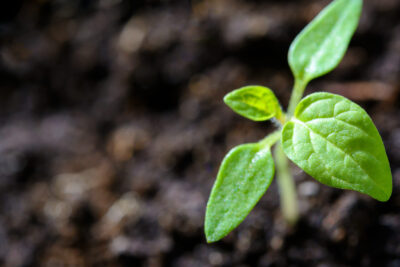
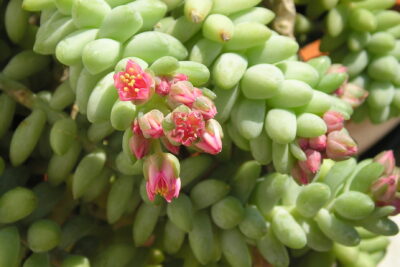



You Must Read